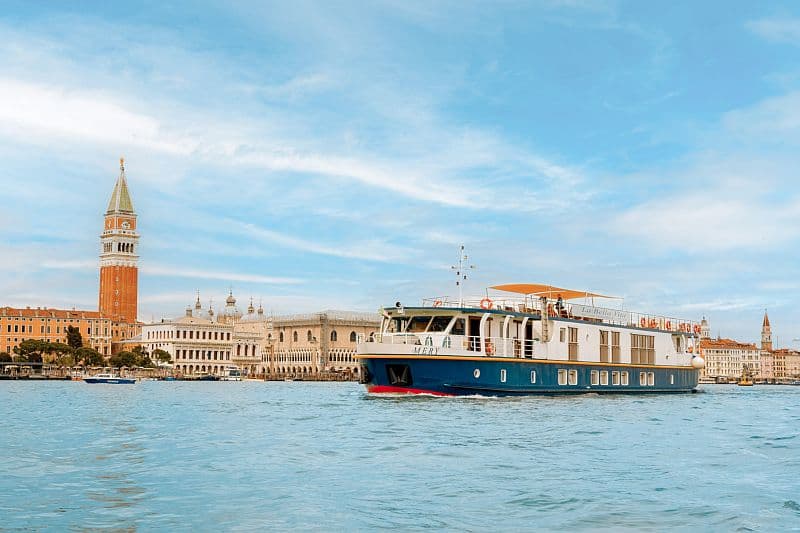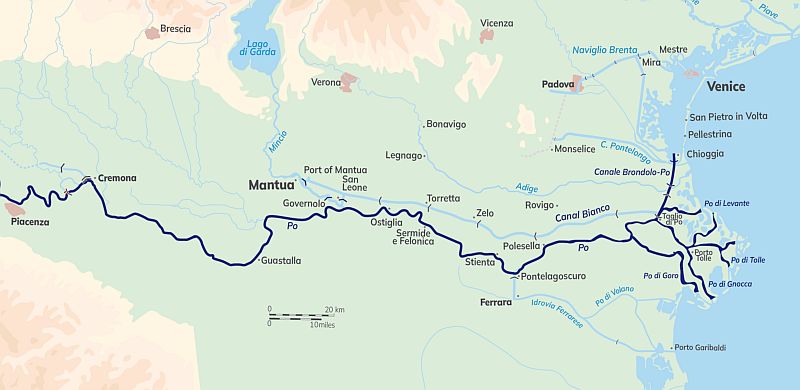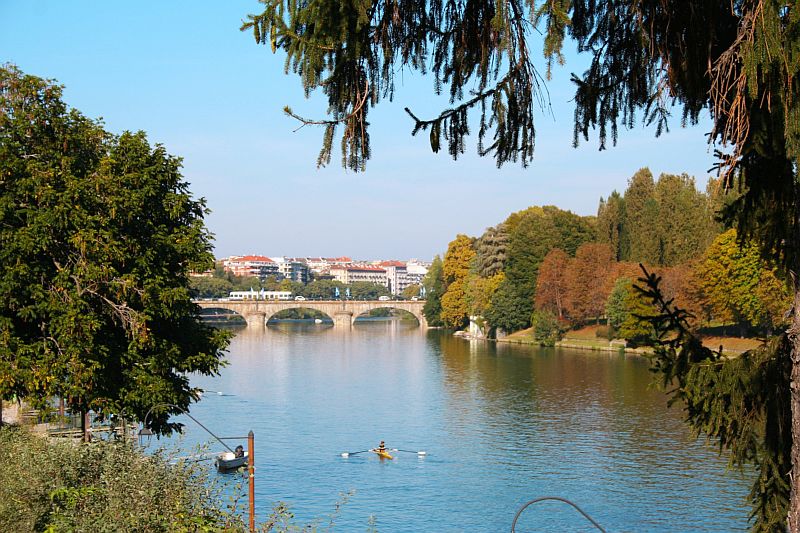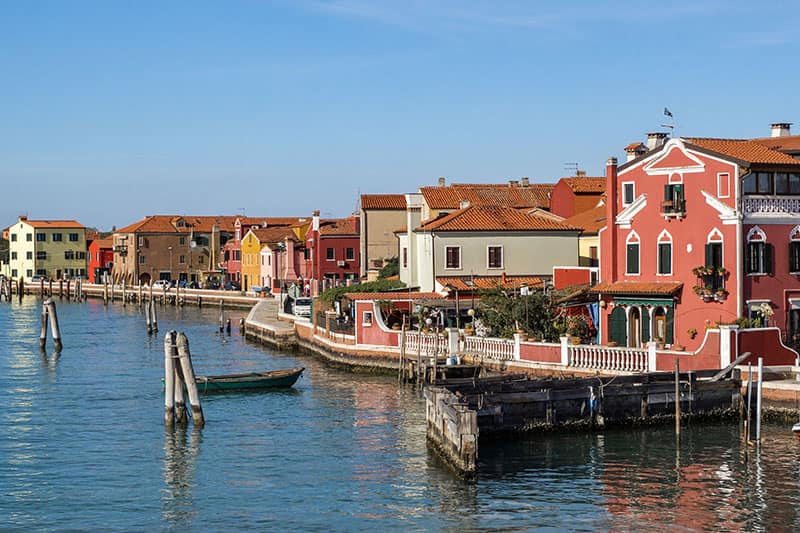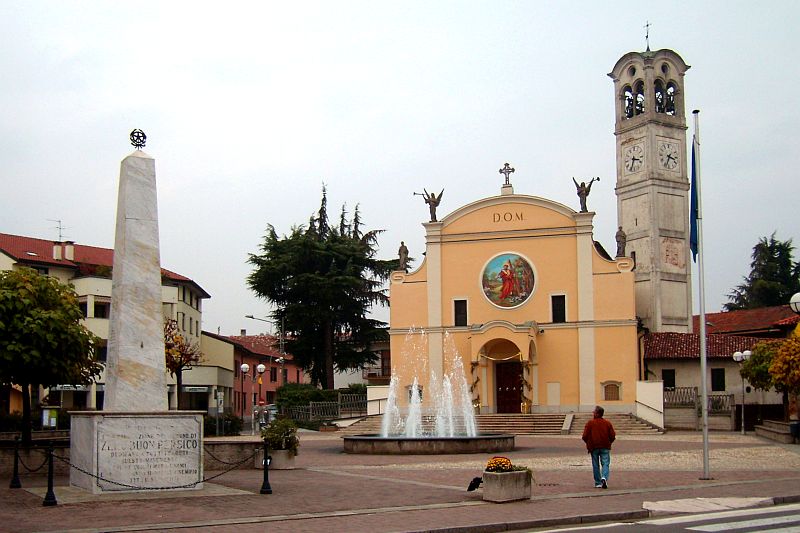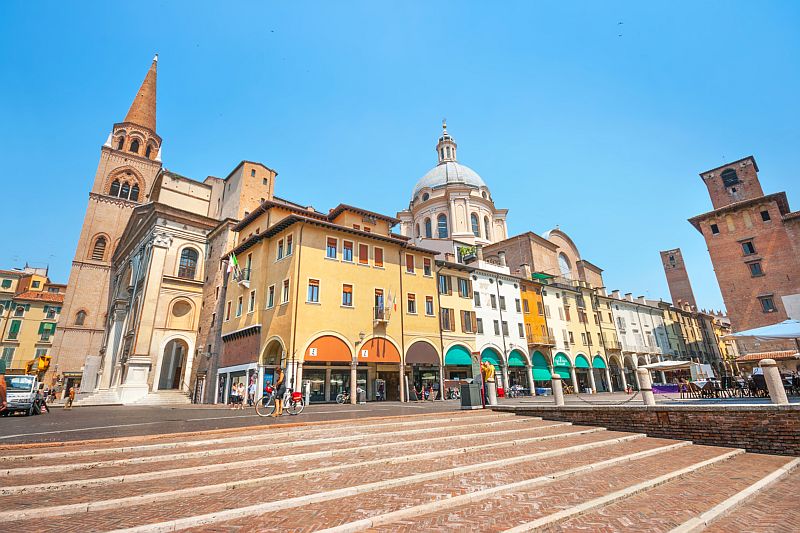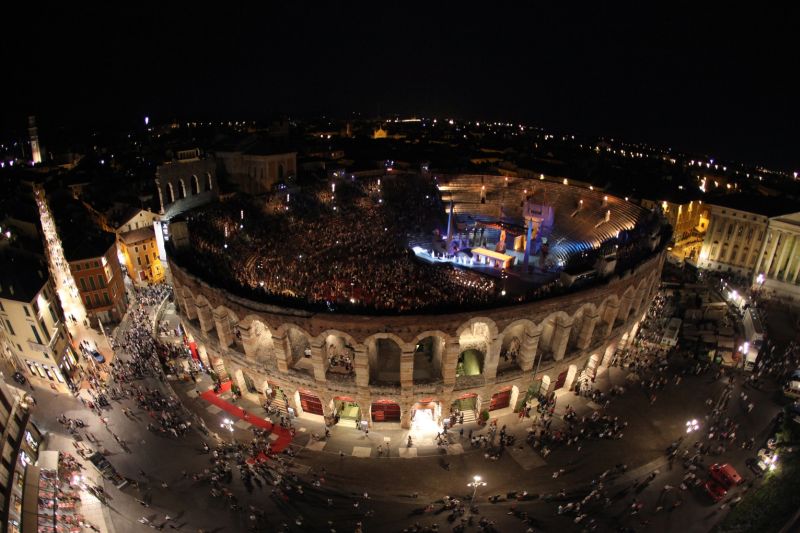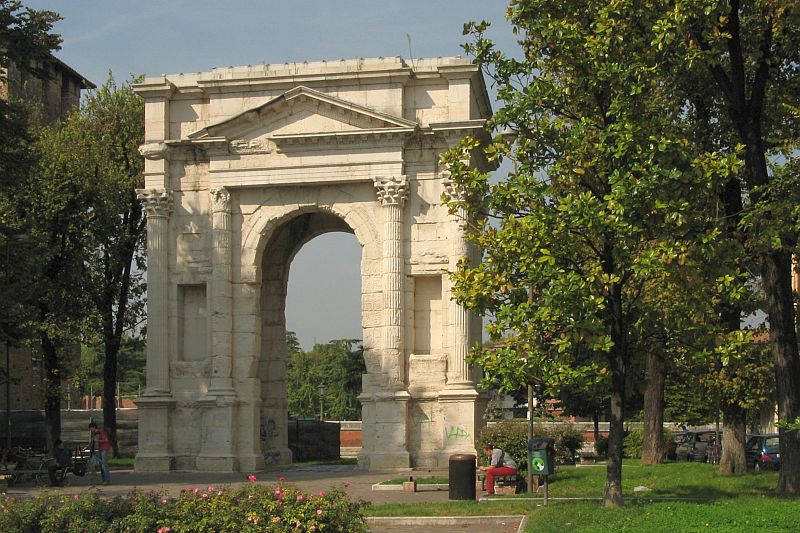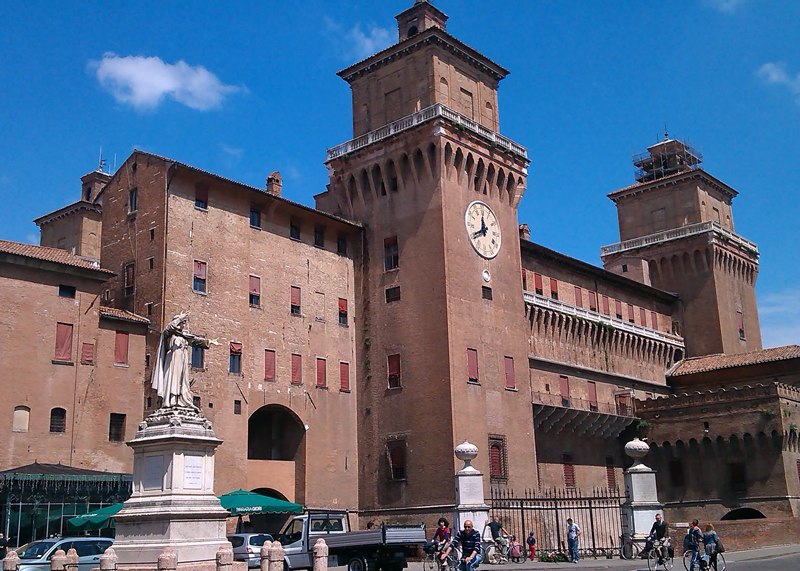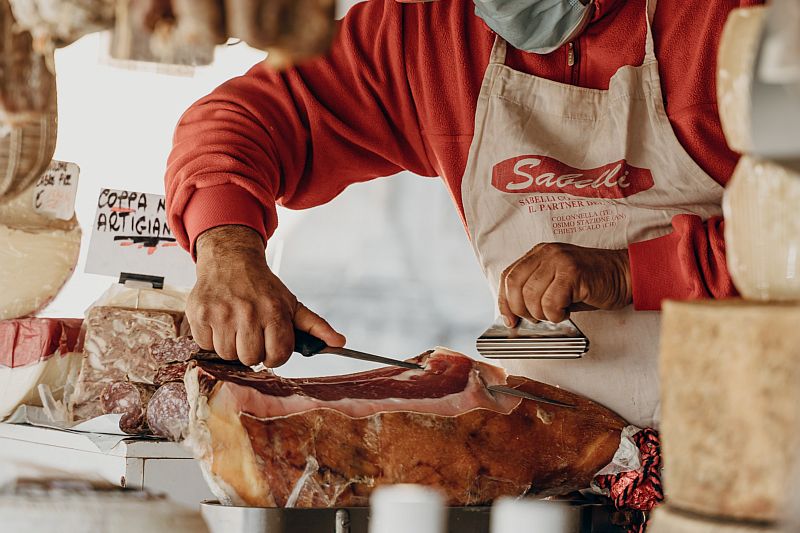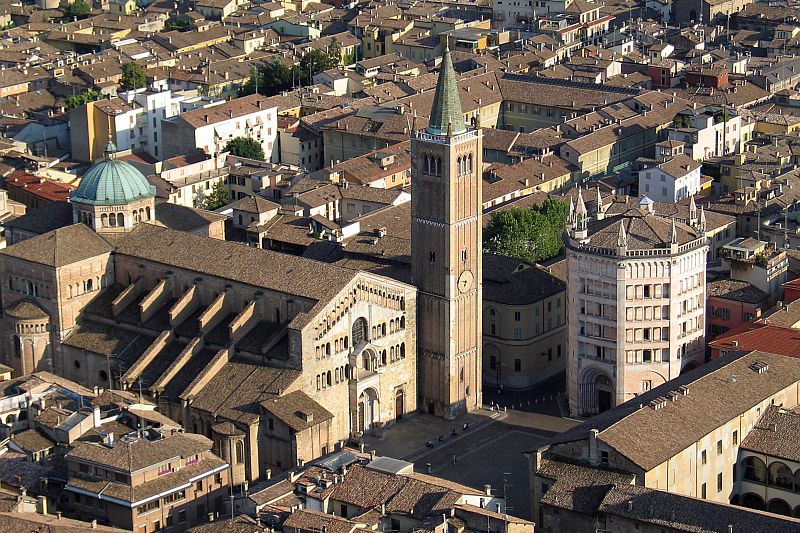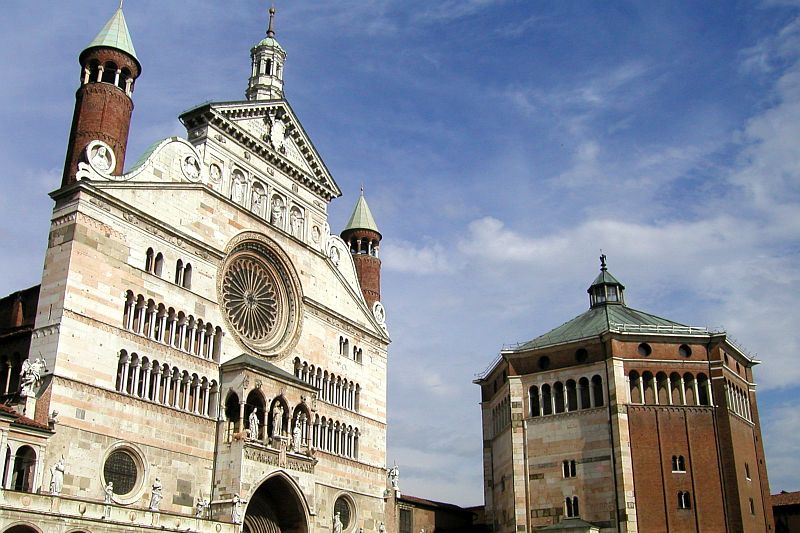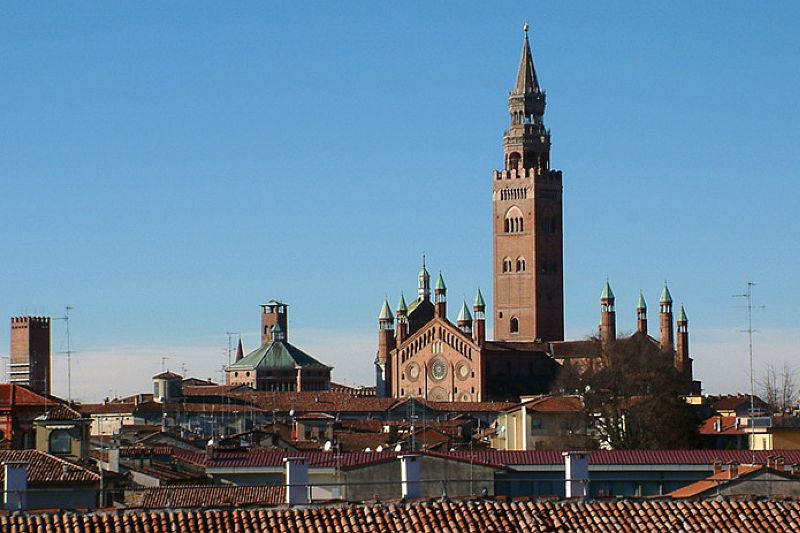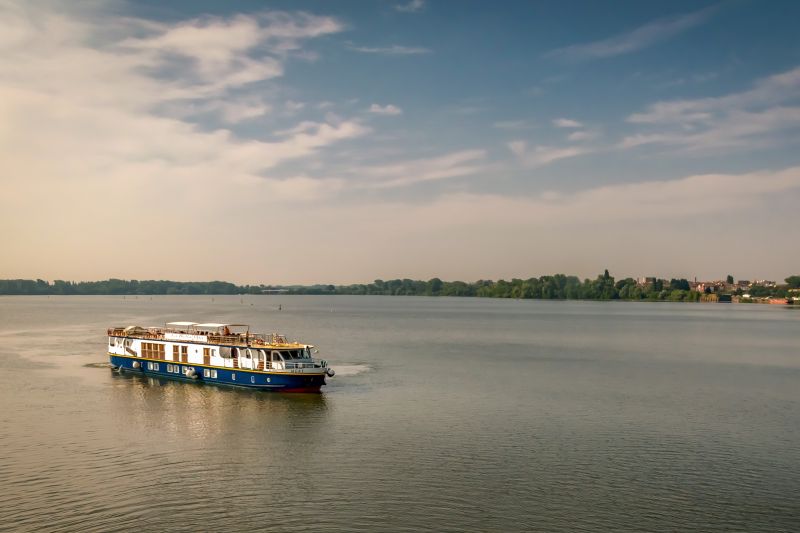Situated on a small island at the southern entrance to the Lagoon of Venice, Chioggia is believed to have once been part of the Byzantine Empire and, like Pellestina, Chioggia is known for its lace-making. A miniature version of Venice, Chioggia has several medieval churches, many of which were rebuilt during the town’s golden age in the 16th and 17th centuries.
Until the 16th century, Cavanella d’Adige was known as “Fosson”, from an ancient branch of the Po River on whose riverbed the Adige would converge after the Rotto della Cucca. Porto Fussone today refers to a small district found at the mouth of the river. The Canale di Valle, which runs through the village, was once one of the paths of the medieval Romea road which united the two important Benedictine monasteries of the area – the Monastery of San Michele Arcangelo di Brondolo and the Monastery of San Giorgio di Fosson. During the Austrian occupation, the embankment of the Canale di Valle was the only road that led from Brondolo to the fortification of Cavanella d’Adige, two of the most important structures built by the Austrians to defend the region.
The first (or last) major town on the River Po before its estuary, Porto Viro was first created during the Fascist era but was subsequently dissolved. It was established anew in 1995 by the merger of the communes Donada and Contarina and serves as a regional riverine port before the River Po enters the Adriatic Sea.
The commune of Taglio di Po owes its name to the grandiose work of river engineering carried out by the Republic of Venice in the early 17th century, to preserve its lagoon from the landfill caused by enormous contributions of alluvial sediment the River Po discharges into the Adriatic. A cut was therefore deemed necessary to divert flood waters directly into the sea as opposed to into the lagoon itself. The project, which was first opposed by the neighbouring Dukes of Ferrara, and then
by Pope Clement VII, was finished after nearly 150 years of negotiations. In 1797, with the fall of the Republic of Venice, the town was incorporated into the Province of Ferrara and, in 1798, the municipality was officially recognised with the name “Taglio di Po”.
In 1872, the parish church of San Francesco d’Assissi opened for worship, and in the following years an attempt was made to construct a bellower, but which remained uncompleted for a lack of funds. The bellower was eventually finished in 1969.
Perhaps the most outstanding buildings in the town, however, are the 18th century villas of Cà Borin and Cà Nani. The imposing 18th century villa of Tentuna Ca ’Zen, its outbuildings and adjacent period church was built by the will of the Zen family of Venetian nobles. The estate later belonged to Lord Byron’s lover, and the poet often stayed in the house. The property is today a Bed and Breakfast, and the setting for our Italian river cruise’s dinner ashore.
Situated between the mouths of the rivers Adige and Po, Adria lies on the remains of the Etruscan city of Atria which may have given its name to the Adriatic Sea, to which it was connected by canals. An ancient settlement of significant importance, Adria houses the former cathedral of Santa Maria Assunta della Tomba, which features a 7th or 8th century octagonal baptismal font.
A commune of the nearby town of Rovigo since 1927, Borsea is a small, mainly residential village built around the 18th century church of San Zenone.
The smallest town in the province of Rovigo, Bosaro is located in the centre of Polestine and lies between the Canalbiano to the north, the Fossa di Polesella to the west and Collettore Padano in the south. The town’s origins are found with the construction of the Canalbiano in the 15th century, to collect the waste water of the Tartaro and Veronese valley, and several of Bosaro’s oldest buildings date to this period.
 English
English
 Spanish
Spanish French
French German
German Norwegian
Norwegian Portuguese
Portuguese Swedish
Swedish Italian
Italian Russian
Russian Simplified Chinese
Simplified Chinese Japanese
Japanese
